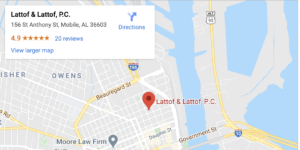Understanding Causation in Personal Injury Cases

If you have suffered a personal injury due to someone else’s conduct or behavior, then you may be able to recover monetary compensation in a personal injury case. You will be required to prove to a court that your injuries were caused by someone else’s negligent or reckless behavior to recover money damages. If you have specific questions about your own personal injury case, then it is important that you speak to an experienced personal injury attorney.
Table of Contents
Standard Elements Required in a Personal Injury Case
Most personal injury cases are brought on the legal theory of negligence.
To prove that someone was negligent, you are required to prove four main elements:
- The defendant owed you a duty of care;
- The defendant breached that duty;
- The breach was the cause of the resulting injuries;
- The injuries cost you damages.
If you are successful in proving these elements, then you will be awarded a sum of money to compensate you for your injuries. One of the main issues that almost always arises is the issue of causation. You must prove that the defendant actually and proximately caused your damages. If you are unable to do this, then you will be unsuccessful in your claim.
What is Causation?
Causation is the third legal element of negligence, and it requires you to prove that the defendant’s action or inaction caused your injuries. If you have been injured in an accident, it might seem obvious that the at-fault party caused your injuries. But you have to prove two types of causation to show that they were negligent: 1) cause in fact; and 2) proximate cause.
Moreover, there may have been more than one cause for your accident, including your own actions. Alabama law operates under the contributory negligence standard. Contributory negligence is a harsh standard that bars you from compensation if the jury finds that you are even 1% at fault for the accident. This is why it’s critical to understand how causation works in your personal injury claim.
What is Cause in Fact?
Cause in fact is also known as “actual cause.” In determining causation, you will have to prove that the defendant’s action or inaction was the actual cause of your injuries. This means that you have to prove that the defendant’s action or inaction was a substantial factor in causing your injuries.
The “but for” test is often used to establish cause in fact. You must prove your injuries would not have occurred “but for” the defendant’s conduct to recover damages. An example of this would be a driver running a red light and hitting your car because of it. If he or she did not run the red light, the accident would not have occurred, and you would have avoided injury.
What is Proximate Cause?
In determining proximate cause, you will have to prove that whatever injuries the defendant caused were foreseeable. This means that the defendant knew or should have known that their conduct could or would likely cause foreseeable injuries to foreseeable victims.
Proximate cause is concerned with fairness. It seeks to limit causation (and therefore liability) to the chain of events that is connected with the plaintiff’s injuries. In other words, the cause can’t be too remote if the plaintiff seeks to hold the defendant liable for their injuries.
The issue of proximate cause is almost always subject to debate as each accident has its own unique set of circumstances that help determine whether or not the defendant was the proximate cause of your injuries. If you cannot prove that the defendant’s action or inaction was both the cause in fact and the proximate cause of your injuries, then you will not be able to recover money damages.
The Importance of the Case of Palsgraf v. Long Island Railroad
The case of Palsgraf v. Long Island Railroad is a landmark negligence case that shows an example of proximate cause. In Palsgraf, a man was rushing to board a train that had already begun moving. Two railroad employees assisted him as he attempted to jump on the moving train. As the man attempted to board, he dropped a package he was carrying.
The man’s package contained fireworks that exploded when they hit the ground, causing fright to everyone nearby. A set of scales fell on Ms. Palsgraf who was standing on the other side of the railway platform, causing her injuries. Ms. Palsgraf attempted to sue the railroad company for negligence.
The Supreme Court found that Ms. Palsgraff’s injuries were not a reasonably foreseeable consequence of the railroad employees’ failure to properly help a passenger on the train. In other words, even if the employees’ were negligent, they could not reasonably foresee that their conduct would injure her when she was standing on the other side of the station.
Ms. Palsgraf was too far away from the allegedly negligent act for her to be a foreseeable plaintiff with foreseeable injuries. So, the Court ruled against her.
Get Your Case Reviewed for Free Today
If you have been injured in an accident and have specific questions about the issue of causation in your case, then it is important that you speak to an experienced personal injury attorney. Negligence laws in Alabama are especially difficult. If you are not careful, you can end up with nothing for your injuries.
Call us today for a free consultation, or contact us online so you can have your case reviewed by a seasoned professional.

